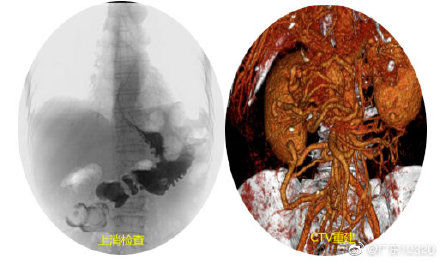10 years ago, Uncle Quan from Chaoshan underwent partial gastrectomy due to duodenal ulcer and stenosis. He recovered well after surgery and was able to eat and drink. However, from the third year after the operation, Uncle Quan developed diarrhea and gradually lost weight, which scared Uncle Quan, thinking that he had an incurable disease again, but a series of examinations in the local hospital did not reveal any tumor. There is no obvious effect in the treatment of dumping syndrome after gastrectomy. In the past 7 years, Uncle Quan has been hospitalized 10 times repeatedly. During this period, he even underwent relevant examinations and treatments for autoimmune diseases. However, the symptoms of diarrhea gradually worsened, and the person was so weak that it was difficult to walk and walk. To further confirm the diagnosis, the doctor found that the contrast agent directly flowed into the transverse colon from the stomach, and the superior mesenteric vein was almost occluded after angiographic examination of the patient’s upper gastrointestinal tract and CT reconstruction of the abdominal blood vessels. This time, I finally found the root cause of Uncle Quan – gastrojejunocolic fistula combined with abdominal hernia! “There are very few cases of gastrojejunocolic fistula,” the doctor said. It mainly occurs after subtotal gastrectomy. The abnormal communication between the remnant gastrojejunostomy and the colon is caused by the chronic penetration of the anastomotic ulcer into the transverse colon. Fistula, its incidence is 0.3-0.4%. Typical clinical manifestations include abdominal pain, vomiting of fecal odor, diarrhea, weight loss, anemia, and hypoproteinemia. At present, the main diagnostic methods are gastrointestinal angiography, endoscopy or CT scan, and gastrointestinal angiography is the most sensitive means of examination. Endoscopy can more intuitively show the location and size of the fistula, but when the fistula is small, it will be hidden by the folds of the intestinal wall, making it difficult to find. Treatment methods include endoscopic closure and surgical resection of fistulas and reconstruction of the digestive tract. In China, endoscopic treatment has not been fully carried out, and active surgical treatment is still the first choice. (via The Sixth Affiliated Hospital of Sun Yat-Sen University)

Source: Guangdong 12320